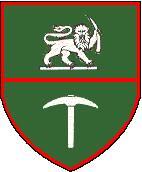|
ANTI-AMBUSH DEVICES
The Rhodesians also developed several devices that
could be fitted to security force vehicles to counter ambushes. The
objective was to provide the occupants of vehicles with some means of
killing, injuring, or pinning down the ambush party until security
forces could outflank them. One such measure involved mounting devices
similar to claymore mines facing
outward from the sides of vehicles. The vehicles were protected by
reinforced backing plates and the mines were detonated electronically
from within the cabs. In one instance, this device
killed 11 insurgents during an ambush. Rhodesian engineers also
developed other similar grenade dischargers, including one that used old
bolt-action .303 rifles with Ballistic cartridges as a propellant to
launch hand grenades from a cup holder affixed to the barrel. The
grenade’s activating lever was secured by the cup until it was
discharged. Care had to be taken in loading and unloading the
dischargers, which were placed at various points along the vehicle to
provide complete coverage. The triggers were activated by a pull cord
and could be fired individually or at once. Another device involved two
AK-47s mounted on the back of a Land Rover. The guns were fired from a
solenoid activator located inside the cab.
All
these devices required the driver to travel through the kill zone as
quickly as possible once an ambush occurred. If enough occupants were
available to retaliate against the attackers, the driver would stop the
vehicle once it was clear of the ambush point and the security forces
would determine the direction of fire by a quick examination of any
bullet holes on the vehicle. Although the retaliatory devices did not
actually kill many insurgents, reports indicate that they were quite
successful in providing a diversion. They also did much to enhance
security force morale.
In
sum, mine-protected and mine-resistant vehicles were among the most
successful countermeasures of the war. Although mine warfare, among
other insurgent tactics, imposed a garrison-mentality on Portuguese
troops in Mozambique during the early 1970s and in El Salvador more
recently, the Rhodesians actively fought to regain and then retain
control over the roads. The Rhodesians commonsense approach was
characterized by a flexibility in the design and constant modification
of the vehicles to keep pace with the insurgents’ changing tactics.
They thus were able to cope not only with the initial mining threat, but
with each new tactic the insurgents developed. When the insurgents began
to combine small-arms fire with mining, the Rhodesians were able to
overcome the new threat and remained on the roads. Similarly, when the
insurgents began planting nonmetallic mines, the Rhodesians readjusted
their mine-detecting devices to home in on the holes rather than the
mines themselves.
Many of these countermeasures were first
developed by the police. Civilians contributed as well, advancing the
countermeasures through refinement and improvement. Thus, when the Army
did begin to develop mine-resistant and protected vehicles, it did so
from a rich base of mostly nonmilitary domestic research and experience.
In addition, rather than importing a few expensive vehicles, the
Rhodesians inexpensively developed and built their own, scrounging many
of the parts. Again, characteristic of their approach to the entire
conflict, the
Rhodesians relied on ingenuity, innovation, and close cooperation to
overcome constraints placed on them by scarce resources and foreign
currency shortages.
|




